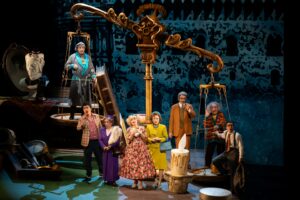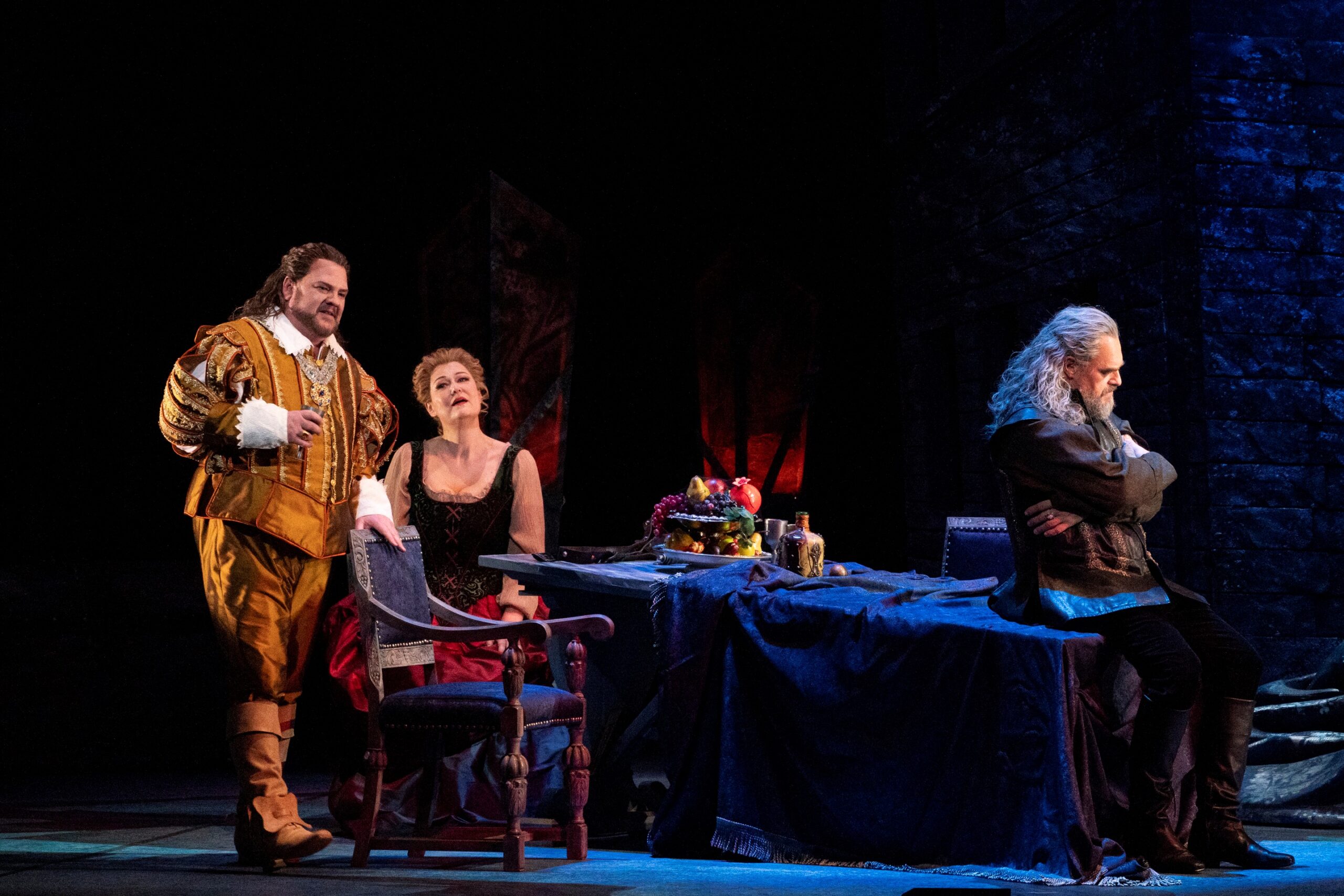Jun Aguni’s spectacular Florentine double bill, Eine florentinische Tragödie (A Florentine Tragedy) and Gianni Schicchi, made a triumphant return after six years, following its acclaimed 2019 premiere. The two operas, both set in Florence but strikingly different in tone, took the audience on an exhilarating emotional journey, from the dark and brooding psychological drama of Zemlinsky to the sharp wit and irresistible charm of Puccini.
Eine florentinische Tragödie (A Florentine Tragedy), set in 1600, unfolds a gripping love triangle between Prince Guido Bardi, who is caught in an affair with Bianca, the wife of the merchant Simone. After an intense duel, Simone ultimately kills the prince, and in a moment of revelation, the husband and wife rediscover the true value of their partnership. In stark contrast, Gianni Schicchi, Puccini’s only comedy, paints a lively picture of love, greed, and family conflict over the inheritance of the wealthy Buoso Donati. The shared theme of the human condition in both operas make them perfect for a double bill despite their opposing tones.
As soon as you step into the auditorium, the looming backdrop of Brunelleschi’s Dome transports the audience to Florence. The set continues to dazzle throughout Eine florentinische Tragödie (A Florentine Tragedy), evoking the sinuous lines of Jugendstil art, contemporary to Zemlinsky. A grand stone house is split in two by an impossibly large root-like tree trunk, visually reinforcing the opera’s themes of fractured relationships, and immersing the audience within a world of hidden desires.
The production grips the audience, guiding them through the suspense of adultery, the mounting tension of the duel, and the eventual reconciliation in Eine florentinische Tragödie (A Florentine Tragedy). The three lead singers deliver compelling performances: David Pomeroy plays a dashing and passionate Guido Bardi, while Nancy Weissbach embodies Bianca’s conflicted desires with nuance. However, it was Thomas Johannes Mayer who stands out as Simone, masterfully portraying the merchant’s shrewdness, arrogance, and suppressed jealousy before his final triumph.
The use of colour by lighting designer Masao Oshima is both relevant and striking. He employs a vivid palette, using deep reds and greens to heighten the violence and jealousy, while icy blue hues convey chilling detachment, making the stage’s emotional temperature palpable.

With Gianni Schicchi, the production shifts to a riotous, fast-paced comedy that captures the essence of human nature — greed, love, and social ambition — within a setting of 1950s Florence. Emi Masuda’s vibrant costumes instantly define each member of the Donati family, emphasising their strong, exaggerated personalities. The set design, featuring oversized props like a giant quill, an ink box, and a balance scale, along with Buoso’s copy of Dante’s Divine Comedy, cleverly reinforce the opera’s satirical take on human folly and social hierarchy.
Despite an unfortunate bout of influenza in Tokyo forcing three cast members to withdraw on opening night, the remaining singers delivered outstanding performances. Italian baritone Pietro Spagnoli played a charismatic and comical Gianni Schicchi, exuding both wit and warmth as a cunning yet doting father while Airi Sunada, as Lauretta, mesmerised the audience with her crystal-clear and heartfelt rendition of Puccini’s beloved “O mio babbino caro”, earning thunderous applause. Asako Yoda brought formidable energy to the role of Zita, and Teppei Kono delivered a commanding presence as Simone, the eldest Donati. Yuki Sunami, stepping in as Nella, showed both vocal skill and excellent comedic timing. Yuri Aminaga’s portrayal of seven-year-old Gherardino brings light to the stage.
Under the baton of maestro Ryusuke Numajiri, the Tokyo Symphony Orchestra achieved a remarkable balance, capturing both the sweeping grandeur of Zemlinsky’s Eine florentinische Tragödie — which at times evoked the lush textures of Strauss’s Der Rosenkavalier — and the sparkling wit of Puccini’s Gianni Schicchi. The orchestra supported the singers expertly, ensuring that both vocal and instrumental forces were given their due prominence.
This Florentine double bill is an unmissable theatrical experience, one that truly merits repeat viewings. Given its immense success, a revival in the near future is not just hoped for, but eagerly anticipated.
Venue: The New National Theatre Tokyo
Composer: Alexander Zemlinsky (1872-1942))/Giacomo Puccini (1858-1924)
Libretto: the play by Oscar Wilde/Giovacchino Forzano
Director: Jun Aguni
Conductor: Ryusuke Numajiri
Set design: Atsumi Yokota
Costume design: Emi Masuda
Lighting designer: Masao Oshima
Cast: A Florentine Tragedy—David Pomeroy, Thomas Johannes Mayer, Nancy Weissbach. Gianni Schicchi—Pietro Spagnoli, Airi Sunada, Asako Yoda, Teppei Kono,
Until 8th February 2025
Photographs, Top: ©Naoya Ikegami/New National Theatre Tokyo
Bottom: ©Naoya Ikegami/New National Theatre Tokyo
Running Time: 2 hours 20 minutes including 1 interval
Review by Miho Uchida

